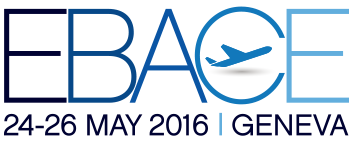Zika and Business Aviation: How to Prepare for Travel to Affected Countries
25 May 2016
The Zika virus has spread to countries that are expecting heavy flight activity this year, especially Brazil, said Doug Carr, NBAA’s vice president of regulatory and international affairs. “And a number of countries have put special procedures in place that affect business aviation,” he added.
Four countries now require disinsection – spraying aircraft interiors to kill mosquitos that may have stowed aboard – for flights arriving from Zika affected countries: Costa Rica, China, Italy and Russia.
At a pop-up session at the 2016 European Business Aviation Convention & Exhibition (EBACE2016), Carr and industry experts focused on what regions, health risks and quarantine procedures business aircraft operators should prepare for.

“Zika is a mosquito-borne virus that was first discovered in Uganda in 1947,” said Dr. Michael Braida, medical director of MedAire Farnborough. This year, the virus has spread to countries in South America, the Caribbean, the Pacific Island and off the west coast of Africa.
The virus usually causes mild symptoms similar to dengue or other tropical diseases, so it’s difficult to diagnose. Its chief risk is that it can cause poor outcomes in pregnancy, including micorencephaly – small head sizes in babies born to women infected while pregnant.
Preventing Mosquito Bites
The virus is transmitted by mosquito bites, so “make sure your passengers and crewmembers have proper insect repellant before going” to an affected country, said Braida. It can also be transmitted by blood transfusion and sexually, so travelers need to be careful, as well as women who may be or may become pregnant.
“Travelers need to make an individual risk assessment for themselves,” said Braida. “Some authorities are advising pregnant women to consider postponing travel to areas with widespread Zika transmission.”
In affected areas, travelers can lower their risk by bringing bug spray and even mosquito nets. “Insect repellant is key to bite prevention,” said Braida, “if you use it diligently and respray after washing.”
Aircraft Disinsection Procedures
In addition to the four countries that have already implemented specific protocols, more will likely require disinsection on arrival, said Chris Wheatley, operations coordinator at Universal Weather & Aviation.
In Costa Rica, disinsection is only required upon arrival at Liberia International Airport (LIR) on flights from Zika-affected countries. The cost is about $25. While the passengers and crew are still aboard, the aircraft’s luggage comparted is sprayed with permethrin, a highly effective, plant-based insecticide. The cabin is sprayed after passengers disembark.
China, Russia and Italy have similar arrival procedures for disinsection, at various costs.
“The permethrin takes about 20 minutes to circulate, and afterwards the aircraft must sit with the doors closed for two hours to make sure the mosquitos are dead,” said Wheatley. “Then it takes another hour for the fumes to clear the cabin, so it can really affect your operations, especially if you’re dropping off passengers.”
In Italy, aircraft that arrive at airports where the disinsection procedure is not available will be asked to go to an airport where it is. Some FBOs and service providers are offering disinsection kits to aircraft in advance of flights to affected countries, especially if they’ll be returning to a country that’s implemented mandatory protocols.

